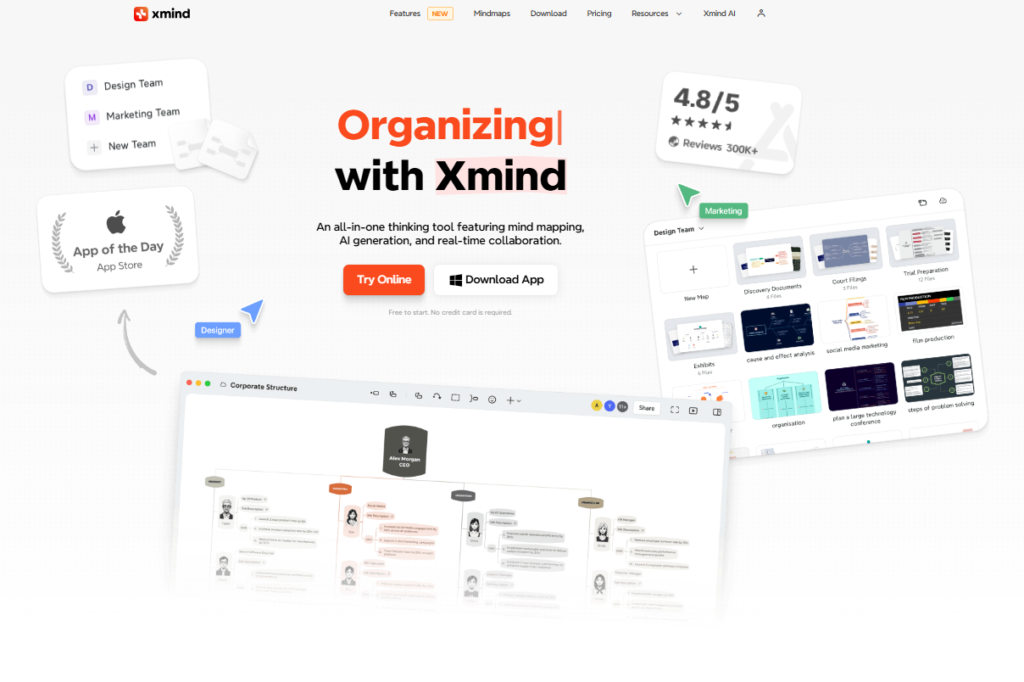As the work landscape evolves, the shift to remote work has opened up a unique opportunity for creative app developers like you. Imagine designing an app that becomes an essential tool for remote workers everywhere, boosting their productivity and simplifying their daily tasks. Not only would you be delivering a valuable service, but you also have the potential to create a consistent income stream.
This guide will take you through the essential steps to develop and monetize a remote work app. From understanding your target audience’s needs to implementing effective monetization strategies, you’ll learn how to create an app that stands out in a competitive market. Ready to embrace the remote work revolution and make a significant impact? Let’s embark on this exciting journey to success!
TL;DR
- Discover a crucial need: Identify a problem faced by remote workers and build an app to solve it.
- Design a user-friendly app: Prioritize ease of use and a seamless experience.
- Choose your monetization strategy: Explore options like subscriptions, in-app purchases, or advertising.
- Market your app effectively: Reach your target audience through targeted advertising and social media.
- Continuously improve: Gather feedback and update your app regularly to meet evolving needs.
- Build a community: Engage with users and foster a sense of belonging.
Building Your App: From Concept to Creation
Building a successful app starts long before the first line of code. It requires a clear vision, a deep understanding of your target audience, and a well-defined plan. This section will guide you through the initial stages, from identifying a niche to selecting the right technology.
Defining Your Niche: Finding the Perfect Problem to Solve
Before diving into code, you need a killer app idea. What specific pain point will your app alleviate for remote workers? Are you targeting freelancers, remote employees, digital nomads, or a specific industry like project management or healthcare? Don’t just think about what you want to build; focus on what remote workers need.

- Brainstorming Techniques: Use mind-mapping tools like MindManager or XMind to visually organize your ideas. Consider using a brainstorming session with colleagues or potential users to gather diverse perspectives. List common challenges remote workers face: communication breakdowns, inefficient project management, difficulty tracking time, loneliness, lack of collaboration tools, cybersecurity concerns, etc.
- Market Research: Validating Your Idea: Don’t rely on gut feeling alone. Use tools like Google Trends to analyze search volume for keywords related to your app idea. Explore competitor apps and identify gaps in the market. Consider conducting surveys using platforms like SurveyMonkey or Typeform to directly ask potential users about their needs and preferences. For example, if you’re considering a project management app, survey remote teams about their current workflows and frustrations. Thorough market research is crucial to understanding the demand for your app and identifying potential revenue streams. Understanding different online business models can also inform your monetization strategy. For a broader overview of online income opportunities, you might find this video helpful: What to Do Online for Money ($240 to $1,350 Per Day?) .
For More Free Videos, Subscribe to the Rhodes Brothers YouTube Channel.
- Competitive Analysis: Learning from the Best (and Worst): Analyze existing apps in your niche. Use tools like App Annie or Sensor Tower to understand their market share, user ratings, and monetization strategies. What are they doing well? What are their shortcomings? How can you differentiate your app and offer a better solution? For example, if you’re building a communication app, analyze Slack, Microsoft Teams, and Google Chat to understand their strengths and weaknesses. Identify features they lack or areas where they could be improved.
Designing an Intuitive User Experience (UX): Making Your App Irresistible
A brilliant app idea is useless without a user-friendly interface. Your app needs to be intuitive, visually appealing, and a joy to use. Don’t underestimate the power of good design; it’s crucial for user engagement and retention.
- User Interface (UI) and User Experience (UX) Design Tools: Use tools like Figma or Adobe XD to create wireframes and prototypes. These tools allow you to visualize your app’s layout and user flow before writing a single line of code. This iterative design process helps identify and fix usability issues early on. For example, create different versions of your app’s home screen and test them with potential users to see which design is most intuitive and engaging.
- Platform Selection: Choosing the Right Environment: Decide whether to build a native app (iOS and/or Android), a web app (accessible through a browser), or a cross-platform app using frameworks like React Native or Flutter. Native apps offer the best performance but require separate development for each platform. Web apps are easier to develop and deploy but may have limitations in terms of functionality and offline access. Cross-platform frameworks offer a compromise, allowing you to build for multiple platforms with a single codebase.
- Minimum Viable Product (MVP): Start Small, Iterate Often: Begin with a basic version of your app that includes only essential features. This allows you to test your core assumptions, gather user feedback, and iterate quickly. Don’t try to build everything at once; focus on delivering a core value proposition first. For example, if you’re building a task management app, your MVP might include only basic task creation, assignment, and completion features. You can add more advanced features later based on user feedback.
Choosing Your Tech Stack: The Foundation of Your App
Your technology choices significantly impact your app’s performance, scalability, and cost. Selecting the right tools is crucial for long-term success.
- Programming Languages: The choice depends on your platform and experience. Swift is commonly used for iOS, Kotlin for Android, and JavaScript (with frameworks like React or Vue) for web apps. Python is often used for backend development. Consider your team’s expertise and the specific requirements of your app when making this decision.
- Databases: You’ll need a database to store your app’s data. Popular choices include relational databases like MySQL or PostgreSQL (suitable for structured data) and NoSQL databases like MongoDB (better for unstructured or semi-structured data). Firebase is a popular cloud-based platform that offers both database and other backend services.
- Cloud Platforms: Services like AWS (Amazon Web Services), Google Cloud Platform (GCP), and Microsoft Azure provide infrastructure for hosting and scaling your app. They offer various services such as compute, storage, and databases. Choosing a cloud provider depends on your budget, scalability needs, and familiarity with their services.
Developing Your App: Bringing Your Vision to Life
This is where the coding magic happens. Whether you build it yourself or hire developers, a structured approach is essential.
- Agile Development Methodology: Embrace Flexibility: Use an iterative approach, breaking down the development process into smaller sprints. This allows for flexibility and adaptation based on user feedback and changing requirements. Tools like Jira or Asana can help manage sprints and track progress.
- Version Control System (Git): Collaborate and Track Changes: Use Git (with platforms like GitHub, GitLab, or Bitbucket) to manage your codebase, track changes, and collaborate with other developers. This is crucial for managing code effectively, especially in larger projects.
- Testing: Ensuring Quality: Thorough testing is crucial to ensure your app is bug-free, performs well, and meets user expectations. This includes unit testing (testing individual components), integration testing (testing the interactions between components), and user acceptance testing (testing with real users).
Monetizing Your App: Turning Your Idea into Revenue
Several strategies exist for generating revenue from your remote work app. The best approach depends on your target audience, features, and business goals.
- Subscription Model: Recurring Revenue: Offer premium features or exclusive content for a recurring subscription fee (monthly or annual). This provides a predictable and sustainable revenue stream. Examples include productivity apps offering advanced task management or reporting features for a fee.
- In-App Purchases: One-Time or Add-on Revenue: Allow users to purchase additional features, tools, or virtual goods within the app. This can be a good option for apps with a core set of free features and optional add-ons. Examples include apps offering premium themes, extra storage, or advanced analytics for a one-time or recurring purchase.
- Freemium Model: Balancing Free and Paid: Offer a basic version of your app for free and charge for premium features or functionalities. This allows you to attract a large user base while generating revenue from premium users. Examples include many popular productivity and communication apps that offer a basic free version with limited features and a paid version with more advanced capabilities.
- Advertising: Careful Consideration: Integrate ads into your app, but be mindful of the user experience. Too many ads can be disruptive and drive users away. Consider using non-intrusive ad formats like rewarded video ads, where users earn rewards for watching ads. This approach requires careful balancing to avoid negatively impacting user experience.
- Affiliate Marketing: Partnering for Profit: Partner with other businesses to promote their products or services within your app and earn a commission on sales. This can be a good way to generate additional revenue without directly charging users for your app’s core functionality. Examples include productivity apps partnering with online course platforms or project management tools.
Marketing Your App: Reaching Your Target Audience
Building a great app is only half the battle. Effective marketing is crucial for attracting users and generating revenue. A well-executed marketing strategy is essential for success.
- App Store Optimization (ASO): Keyword Research and Optimization: Optimize your app’s listing on the App Store and Google Play Store. Use relevant keywords in your app’s title, description, and keywords field. Conduct thorough keyword research using tools like App Annie or Sensor Tower to identify relevant keywords with high search volume and low competition. A well-optimized app store listing improves your app’s visibility in search results.
- Social Media Marketing: Building a Community: Promote your app on relevant social media platforms. Engage with potential users, respond to comments and questions, and build a community around your app. Use targeted advertising on platforms like Facebook, Instagram, Twitter, and LinkedIn to reach specific demographics. Consider influencer marketing to leverage the reach and credibility of industry experts or popular personalities.
- Content Marketing: Showcasing Your Value: Create high-quality content (blog posts, articles, videos, infographics) that showcases your app’s value proposition and addresses the needs of your target audience. This helps establish your brand as a thought leader and attracts potential users organically. For example, create blog posts explaining how your app solves specific problems for remote workers, or create video tutorials demonstrating its features.
- Paid Advertising: Reaching a Wider Audience: Consider using paid advertising on platforms like Google Ads and social media to reach a wider audience. Use targeted advertising to reach specific demographics and interests. Carefully track your ad campaigns’ performance to optimize your spending and maximize your return on investment (ROI).
Actionable Steps and Expert Advice to Build and Monetize an App for Remote Workers
The journey to building and monetizing a successful remote work app differs depending on your experience and resources. This section provides tailored advice for beginners, experienced developers, and those nearing retirement.
For Beginners: Start Simple, Iterate Fast
If you’re new to app development, starting small is key. Don’t try to build the next big thing overnight. Focus on a single, well-defined problem and build a minimum viable product (MVP) to test your assumptions.
- Choose a No-Code/Low-Code Platform: Platforms like Bubble, Adalo, or Glide allow you to build functional apps without extensive coding knowledge. This reduces the learning curve and allows you to focus on the app’s core functionality and user experience. These platforms are excellent for prototyping and testing your app idea before investing in more complex development.
- Focus on One Core Feature: Don’t try to build every feature imaginable at once. Start with one core feature that solves a specific problem for your target audience. This allows you to launch quickly and gather user feedback to inform future development.
- Prioritize User Feedback: Actively solicit and incorporate user feedback throughout the development process. Use feedback to iterate quickly and improve your app based on real-world usage. Regularly check app store reviews and respond to user comments.
- Consider a Freemium Model: A freemium model, offering a basic version for free and charging for premium features, is a low-risk way to attract users and generate revenue. This allows you to build a user base while testing different monetization strategies.
- Learn Continuously: App development is a constantly evolving field. Take advantage of online courses, tutorials, and communities to continuously learn and improve your skills.
For Experienced Developers: Scale Up, Build a Brand
If you have experience in app development, you can explore more ambitious projects and sophisticated monetization strategies.
- Build a Native App: For optimal performance and user experience, consider building a native app for iOS and Android. This requires more development effort but offers superior functionality and a smoother user experience.
- Explore Advanced Monetization Strategies: Consider subscription models, in-app purchases, or a combination of both. This allows for more diverse revenue streams and the potential for higher earnings.
- Focus on Brand Building: Develop a strong brand identity and build a community around your app. This will help you attract users and build loyalty. Use social media, content marketing, and influencer marketing to promote your app and engage with your users.
- Leverage Advanced Marketing Techniques: Explore advanced marketing techniques like influencer marketing, affiliate partnerships, and paid advertising campaigns. This can help you reach a wider audience and drive user acquisition.
- Data-Driven Decisions: Use analytics tools to track app performance and user behavior. Use this data to inform your development and marketing decisions.
For Those Nearing Retirement: Leverage Experience, Outsource Tasks
If you’re nearing retirement, you can leverage your existing skills and experience to build an app that addresses a specific niche within the remote work market.
- Focus on a Specific Niche: Identify a problem you’re passionate about solving and build an app specifically for that niche. This allows you to focus your efforts and target a specific audience.
- Create a User-Friendly App: Prioritize ease of use and intuitive design. A simple, well-designed app is more likely to attract and retain users.
- Outsource Development: Consider outsourcing development tasks to focus your energy on marketing and business development. This allows you to leverage your existing skills and experience while minimizing the technical demands of app development.
- Build a Sustainable Business: Focus on building a sustainable business rather than a quick win. A well-planned and executed app can provide a steady income stream for years to come.
- Enjoy the Process: Building an app should be an enjoyable experience. Focus on the problem you’re solving and the value you’re providing to your users.
Regardless of your experience level, remember that building a successful app requires dedication, perseverance, and a willingness to learn and adapt. By focusing on your target audience, providing a valuable solution, and continuously iterating based on feedback, you can significantly increase your chances of success.
Common Mistakes to Avoid: Learning from Others’ Experiences
Building a successful app requires not only creativity and technical skill but also a keen understanding of common pitfalls. Avoiding these mistakes can save you time, money, and frustration. Let’s delve deeper into some critical areas where many app developers stumble.
Ignoring User Feedback: The Voice of Your Customer
User feedback is invaluable. It’s the direct line to understanding how your app is performing, what users like, and what needs improvement. Ignoring this feedback is a recipe for disaster.
- Actively Soliciting Feedback: Don’t wait for users to complain; proactively seek feedback. Incorporate in-app surveys, feedback forms, and even in-app chat features to encourage users to share their thoughts. Consider offering incentives for participation, such as early access to new features or a chance to win a prize.
- Responding to Feedback: Don’t just collect feedback; respond to it. Acknowledge user comments and suggestions, even if you can’t implement them immediately. This shows users that you value their input and are actively working to improve their experience. Publicly addressing concerns on app store reviews demonstrates your commitment to customer satisfaction.
- Analyzing Feedback for Trends: Don’t just read individual comments; look for patterns and trends in the feedback. What are the most common complaints? What features are users requesting? This analysis can inform your development roadmap and prioritize improvements. Use tools to categorize and analyze feedback, identifying recurring themes and prioritizing fixes.
- Regularly Checking App Store Reviews: App store reviews are a public forum for user feedback. Monitor these reviews regularly and respond to both positive and negative comments. Addressing negative reviews promptly and professionally can mitigate the damage and show potential users that you care about their experience.
Poor App Design: The Importance of User Experience (UX)
A poorly designed app, regardless of its functionality, will struggle to gain traction. Users expect intuitive navigation, visually appealing interfaces, and a seamless user experience.
- Investing in Professional UI/UX Design: Don’t skimp on design. Invest in professional UI/UX design services to create an app that is both visually appealing and easy to use. A well-designed app is more likely to engage users and encourage them to return.
- User Testing Before Launch: Before launching your app, conduct thorough user testing with a focus group. Observe how users interact with your app, identify areas of confusion or frustration, and make necessary improvements before the official release. This iterative testing process ensures a better user experience from the start.
- Accessibility Considerations: Design your app with accessibility in mind. Ensure it’s usable by people with disabilities, adhering to accessibility guidelines. This expands your potential user base and demonstrates social responsibility.
- Consistency and Branding: Maintain a consistent design language and branding throughout your app. This creates a cohesive and professional experience for users.
Insufficient Marketing: Reaching Your Target Audience
Even the best app will fail without effective marketing. Don’t underestimate the importance of reaching your target audience and building awareness.
- Developing a Comprehensive Marketing Plan: Create a detailed marketing plan outlining your target audience, marketing channels, budget, and key performance indicators (KPIs). This plan should guide your marketing efforts and ensure you’re using your resources effectively.
- Utilizing a Multi-Channel Approach: Don’t rely on a single marketing channel. Use a combination of organic and paid marketing strategies, including social media marketing, content marketing, search engine optimization (SEO), app store optimization (ASO), email marketing, and paid advertising.
- Targeted Advertising: Use targeted advertising to reach specific demographics and interests. This ensures your marketing budget is spent effectively, reaching the users most likely to be interested in your app.
- Tracking and Analyzing Results: Regularly track and analyze your marketing campaigns’ performance. Use analytics data to identify what’s working and what’s not, and adjust your strategy accordingly.
Neglecting App Updates: Continuous Improvement
Launching an app is not the end of the process; it’s just the beginning. Regular updates are crucial for fixing bugs, adding new features, and improving performance.
- Establishing a Regular Update Schedule: Establish a regular schedule for releasing app updates. This ensures users receive timely bug fixes, new features, and performance improvements. Communicate this schedule to your users to manage expectations.
- Prioritizing Bug Fixes: Address bugs and crashes promptly. Unresolved bugs can lead to negative reviews and user churn. Use bug tracking tools to manage and prioritize bug fixes.
- Adding New Features Based on Feedback: Incorporate user feedback into your update strategy. Add new features based on user requests and market trends. This demonstrates your commitment to improving the app and meeting user needs.
- Communicating Updates to Users: Communicate upcoming updates and new features to your users through in-app notifications, email, and social media. This keeps users informed and engaged.
Ignoring Analytics: Data-Driven Decision Making
Data is essential for understanding your app’s performance and making informed decisions. Ignoring analytics means operating in the dark.
- Tracking Key Metrics: Track key metrics such as daily/monthly active users (DAU/MAU), user retention, session duration, feature usage, and conversion rates (if applicable). This data provides insights into user behavior and app performance.
- Using Analytics Tools: Utilize analytics tools like Firebase, Mixpanel, or Amplitude to track user behavior and app performance. These tools provide detailed reports and dashboards to visualize your app’s key metrics.
- Identifying Areas for Improvement: Use analytics data to identify areas for improvement in your app’s design, functionality, and marketing. This data-driven approach ensures you’re focusing your efforts on what matters most.
- Optimizing Marketing Efforts: Use analytics data to optimize your marketing campaigns. Identify which channels are most effective and adjust your spending accordingly.
By diligently addressing these common mistakes, you can significantly enhance your chances of creating a successful and thriving remote work app. Remember, continuous learning and adaptation are crucial for long-term success in the ever-evolving app development landscape.
Frequently Asked Questions (FAQs)
How much does it cost to build a remote work app?
The cost varies greatly depending on the app’s complexity, features, and whether you hire developers or build it yourself. Simple apps can cost a few thousand dollars, while complex apps can cost tens or hundreds of thousands.
How long does it take to build a remote work app?
Development time depends on complexity and team size. Simple apps can be built in a few months, while complex apps can take a year or more.
What are the best monetization strategies for remote work apps?
The optimal strategy depends on your app’s features and target audience. Consider freemium models, subscriptions, in-app purchases, or advertising.
How do I market my remote work app effectively?
Use a multi-channel approach: ASO, social media marketing, content marketing, and paid advertising. Focus on building a community and engaging with your users.
What are the common mistakes to avoid when building a remote work app?
Ignoring user feedback, poor app design, insufficient marketing, neglecting app updates, and ignoring analytics are common pitfalls.
What are some essential tools for app development?
Consider using tools like Figma (UI/UX design), Xcode (iOS), Android Studio (Android), React Native or Flutter (cross-platform), Firebase (backend), and various databases (MySQL, PostgreSQL, MongoDB).
How do I protect my app idea?
Consult an intellectual property lawyer to explore options like patents, trademarks, and copyrights.
How do I scale my app?
Use cloud platforms like AWS, GCP, or Azure to handle increased traffic and data storage. Monitor your app’s performance and adjust your infrastructure as needed.
How do I handle user feedback?
Actively solicit feedback through in-app surveys, feedback forms, and app store reviews. Respond to feedback promptly and use it to improve your app.
What are some examples of successful remote work apps?
Slack, Zoom, Asana, Trello, and Monday.com are examples of successful remote work apps that have achieved significant market penetration and user adoption. Analyze their features, marketing strategies, and monetization models to learn from their success.
Embrace the Remote Work Revolution
Building and monetizing a successful remote work app requires careful planning, execution, and a commitment to continuous improvement. By following the steps outlined in this guide, you can increase your chances of creating an app that not only solves a real problem for remote workers but also generates a sustainable income stream. Remember to prioritize user experience, gather feedback, and adapt to the ever-evolving needs of the remote work market.
Thank you for reading! Check out the Rhodes Brothers YouTube Channel for more videos and information to help you succeed!
Resource List
Books
- “Clean Code” by Robert C. Martin
- “The Pragmatic Programmer” by Andrew Hunt and David Thomas
- “Head First Design Patterns” by Eric Freeman and Elisabeth Robson
- “Designing Data-Intensive Applications” by Martin Kleppmann
- “Traction: How Any Startup Can Achieve Explosive Customer Growth” by Gabriel Weinberg and Justin Mares
- “Jab, Jab, Jab, Right Hook” by Gary Vaynerchuk
- “The Lean Startup” by Eric Ries
- “Zero to One” by Peter Thiel
Courses
- Udemy (various app development courses for iOS, Android, React Native, Flutter, etc.)
- Coursera (software engineering, computer science, and related topics)
- Udacity (nanodegrees and courses on mobile app development)
- Codecademy (interactive coding lessons)
- HubSpot Academy (inbound marketing, content marketing, social media marketing)
- Google Digital Garage (digital marketing topics)
Tools
- Figma/Adobe XD (UI/UX design)
- Xcode (iOS development)
- Android Studio (Android development)
- React Native/Flutter (cross-platform development)
- GitHub/GitLab/Bitbucket (version control)
- Jira/Asana/Trello (project management)
- Firebase (backend services, database, authentication, analytics)
- AWS/GCP/Azure (cloud platforms)
- Bubble/Adalo/Glide (no-code/low-code platforms)
- Google Analytics (website traffic and user behavior)
- Facebook Ads Manager (Facebook and Instagram advertising)
- Google Ads (Google search and display advertising)
- SEMrush/Ahrefs (SEO keyword research and competitor analysis)
- Buffer/Hootsuite (social media management)
- Mailchimp/ConvertKit (email marketing)
- Firebase/Mixpanel/Amplitude (app analytics)
Monetization
- Stripe/PayPal (payment processing)
- App Annie/Sensor Tower (app market analytics)
App Monetization Cheat Sheet
- Identify your target audience’s needs and pain points.
- Develop a minimum viable product (MVP) to test your assumptions.
- Choose a monetization strategy that aligns with your app’s features and target audience (freemium, subscription, in-app purchases, advertising, affiliate marketing).
- Prioritize user experience to encourage engagement and retention.
- Regularly update your app to fix bugs, add new features, and improve performance.
- Use analytics to track key metrics and make data-driven decisions.
- Develop a comprehensive marketing plan to reach your target audience.
- Continuously gather and respond to user feedback.
- Adapt your strategy based on market trends and user behavior.
- Build a strong brand and community around your app.
- Consider outsourcing tasks to focus on your strengths.
- Focus on providing value to your users.
- Be patient and persistent; building a successful app takes time and effort.






